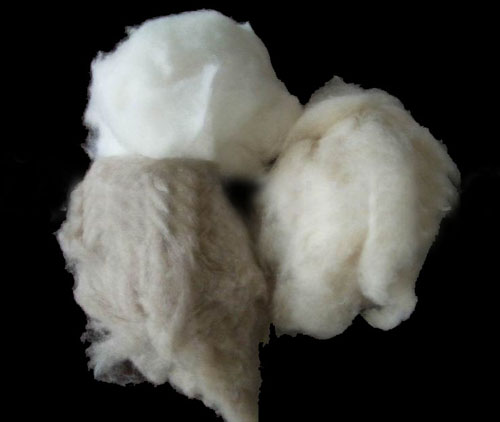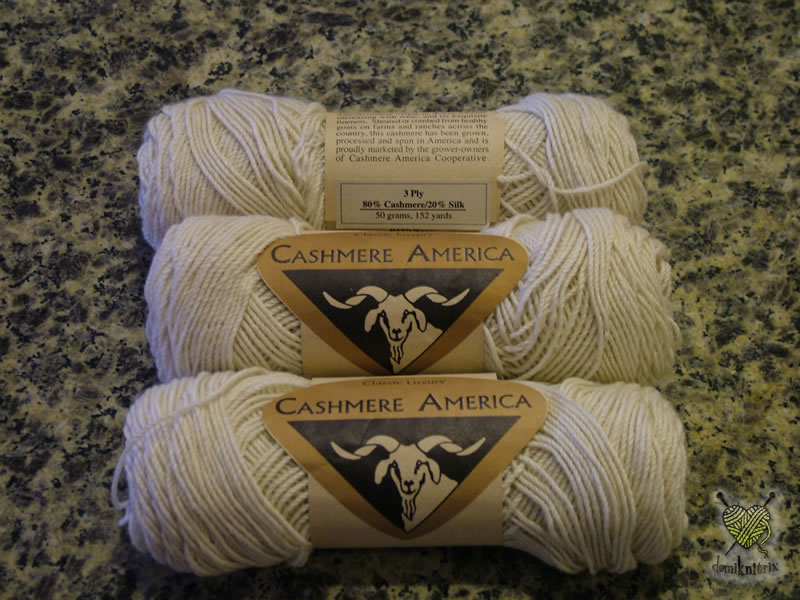Cashmere wool
The cashmere wool (also known as cashmere ) is a very fine and soft natural fiber, which is obtained from the undercoat of the cashmere goat.
Origin
The name is derived from the Kashmir region. The housed there schlappohrigen genus of horned Kashmir goat with about 20 races occurs in the coat colors white, gray, brown or black. It belongs to the family of the goats, a subspecies of goat wool. In their home cashmere wool is processed into high-quality textiles craft since about 1000 BC.
Main producing countries today are China, Mongolia, Iran and the Central Asian highlands ( Pamir ). However, there are also large breeding farms in Australia, New Zealand and Scotland. The regional industry that specializes in the manufacturing of garments such as scarves and hats.
Properties
The hair from the deck (synonym awns ) purified undercoat of the Kashmir goat is particularly fine, with a diameter of only 15 to 19 microns and a length of 25 to 90 millimeters. The average diameter of the hair must not exceed 19 micrometers, with a variation coefficient of 24% and a maximum of 3% of hair having a diameter of about 30 micrometers. Kashmir is one of the precious wool with very good heat retention properties at low weight due to its tender texture.
Kashmir is one of the most valuable and most expensive natural fibers and is therefore often sold mixed with Merino wool or other sheep's wool. The selling price depends on the quality of the wool. Hair should be as fine as possible (thin), long, curled and bright ( white) that; they take it like other wool dyes well on.
Extraction
- Combing: the coat is combed during moulting the end of winter or in spring. Some of the goats are shorn by machine. 150 grams are collected per animal.
- Is hand sorted by color, bad games and wash to remove fat and impurities.
- De-awning: the coarse guard hairs ( awns ) is separated from the desired fine undercoat, today also mostly by machine.
Designation
In the European Union a designated exclusively with cashmere product must include the Textile Labelling according to Regulation 1007/2011 a share of at least 85 % of cashmere wool. Goods with cashmere should have a minimum content of 14.5 % on cashmere fibers. Only the highest quality goods made of pure cashmere wool must bear the name 100 % cashmere.
Sometimes a supposedly more valuable so-called " pashmina wool " is offered. This came from special mountain goat from the Himalayas (eg Chyangra - goat) and differs from Kashmir. In reality, pashmina shawls are traditionally made of ordinary Kashmir.










